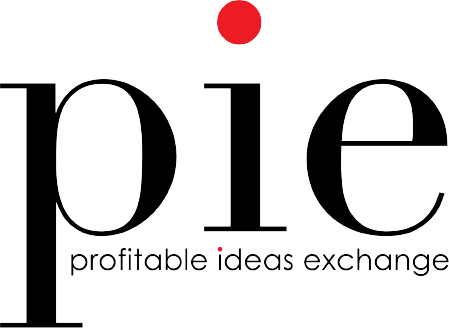On a recent trip from Minneapolis to Montana, I sat next to the executive director for a local non-profit in Bozeman, MT. We’ll call him Ed. Our aircraft lacked WiFi or TV screens, having an almost vintage feel with worn seats and no plugs to speak of. Without the usual distractions that occupy time in the air, Ed and I dove deep into conversation on work, life and everything in between. Ed leads almost 80 people, either directly or indirectly, at an organization that provides winter recreation opportunities for almost 800 kids across the Gallatin Valley. Just before takeoff he’d been frantically tapping away at e-mails. Once in the air, his sighs gave away his frustration. The problem? Not enough staff for the upcoming week of kids’ practices. Ed oversees a staff of nearly 80 coaches, program managers, marketing folks and administrative staff. On a typical week, the program has ample coaches to go around but this was the week before Christmas and many of his team had headed home for the holiday season. Just before the cabin doors shut, Ed sent a flurry of e-mails to those on team, pleading for some of the remaining staff to jump in a help in the hopes of avoiding a cancelled practice. Coaching a kids practice was not in the job description for many on his team and no one was waving their hand for a chance to spend an hour outside with a bunch of 4-foot energizer bunnies in the middle of December.
Ed’s challenge is not unique. “That’s not my role,” or “that’s so and so’s responsibility,” is a common refrain in any organization that operates with distinct teams and positions. However, this work ownership problem is as much cultural as it is organizational. Companies often measure and reward employees based on how well they execute on the tasks and responsibilities outlined in their job description. Those who get ahead are the employees who over-deliver on the work assigned to them and shout their successes from the rooftops. As a result, employees are incentivized to focus their time and attentions on their role within the organization, to stick to their lanes and to highlight individual accomplishments and contributions. This mindset isn’t all bad, but it inherently limits an organization’s potential by constraining success to a few, at the expense of the whole.
When I first joined PIE as an associate director, business was a bit … slower. I had few client projects and spent my first few weeks in training, watching and observing more senior people within the organization to try and understand how this funny company, coincidentally named after my favorite dessert, operates.
On Mondays, we host an all-hands huddle where we talk through the upcoming client work for the week and review who will be helping facilitate and manage logistics for those projects. We also assign back-up help in case we hit a glitch. Kristin Horgan, known as the queen of all things PIE process, used to host these check-ins. As Kristin began reviewing any white space on the list, I watched my fellow employees jump all over each other to get their name on that list to help. It was not unlike the game show Jeopardy, where the first person (or the loudest person) to call their name would secure a coveted slot on Kristin’s list. An audible “yes” and fist pump often accompanied the winner.
A few weeks into my new job, I was assigned to a project team for a live event in San Francisco. My job was to call and e-mail ~60 executives to invite them to attend an in-person roundtable session with their peers. I alternated calling and e-mailing every day for two weeks. About halfway through the first week, my colleague, Leah, from across the hall, popped in to see how it was going. Leah was known for delivering “glitter bombs” for her clients. She brought a bright energy to every call and conversation that often left those in her wake feeling dazzled. She asked if she could help my recruiting efforts by sending me some sample e-mails to try. She also offered to try calling through some of my targets to see if she could get through the switchboard. As a more seasoned employee, I was thrilled to learn from her and have her help! She wasn’t on the project team with me but spent a few hours helping me re-do some of my e-mails and source new phone numbers for the executives. By the end of the second week, we’d recruited over 10 chief information officers to attend the event!
Flash forward to today. When not working at PIE, I spend my time ski racing and running and this week I’m working from Cable, Wisconsin to compete in the American Birkebeiner. Our Chief Strategy Officer messaged me first thing Monday, not to ask about the project report I owe her, but to wish me luck. She asked what she could take off my plate this week and how she could help so that I could focus on racing. She isn’t my boss or my direct report. In fact, we only overlap on a handful of projects but despite her role and seniority in the company, her first and most important question was “how can I help?”
At PIE we’ve created a culture where degree of helpfulness matters just as much as delivery on your specific role. When an ‘ask’ pops up in our Teams chat for a sample e-mail, guidance on a tricky project question or a recommendation for the best pizza place in town, the responses fly in faster than a 747. During our bi-annual reviews, we evaluate ourselves and each other on how helpful we are to our colleagues, and we celebrate and reward those who go above and beyond to deliver for others. For the first time this year, we will even award compensation around degree of helpfulness. We bring this same mindset to serving clients. What can we do to make their job easier? What can we deliver that saves them an e-mail or a phone call? What are we capable of providing that minimizes their workload and enhances their ability to execute on their job? Sometimes this means offering to draft an e-mail or source a phone number. Sometimes this means pulling a report or PowerPoint together that they can share with their company. Sometimes it means individually crafting 30 e-mails for them to send out to their most important prospects. We call this delivering the lagniappe. These value-adds are rarely spelled out in our contract, but if our job is to help our clients, the first thing to do is figure out how.
As Ed and I finished our final bites of packaged pretzels and peanuts, we talked about how to implement this mindset at his non-profit. The first step was to add “helpfulness” to employee evaluations and reward employees who excel at helping others. The goal? To measure success less on individual accomplishment and instead on contributions to the team and broader mission of the organization. In a digital first world, it has become that much easier to operate in siloes. The lack of hallway conversations and forced physical separation invites us to focus on our work, our assignments, and our deliverables. But the irony is that most challenges and problems today require and demand the time and talents of multiple people and teams and are made better when working synchronously rather than individually. Even the airplane we sit on doesn’t work without the de-icing team, the flight team, the maintenance team, the luggage team and the safety team all working in tandem. What if the flight team noticed a safety signal on but their response was “not my job?”
As consultants, our job is to help. Sometimes that means doing the job we’ve been assigned but more often it means taking the time to understand the real problem and then offering to help in the ways we are able. “How can I help?” might be the most simple and powerful tool in our toolbox and the secret to landing the plane both for our clients and our teams.


